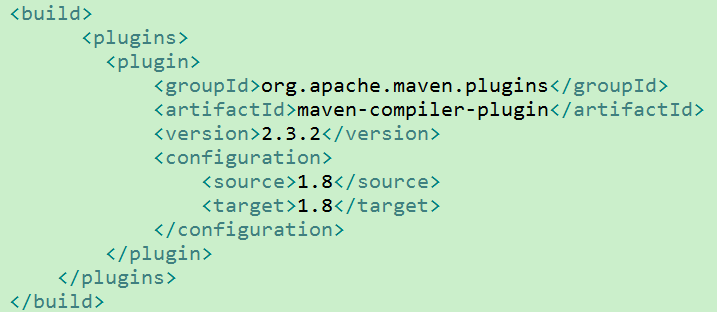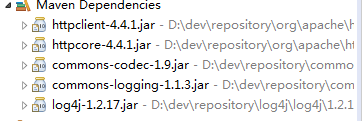HTTPS 其实就是 HTTP + SSL/TLS 的合体,它其实还是 HTTP 协议,只是在外面加了一层,SSL 是一种加密安全协议
引入 SSL 的目的是为了解决 HTTP 协议在不可信网络中使用明文传输数据导致的安全性问题
SSL/TLS协议及其握手过程
在 SSL/TLS 握手的过程中,客户端和服务器彼此交换并验证证书,并协商出一个 “对话密钥” ,后续的所有通信都使用这个 “对话密钥” 进行加密,保证通信安全
1 打招呼
当用户通过浏览器访问 HTTPS 站点时,浏览器会向服务器打个招呼,服务器也会和浏览器打个招呼。所谓的打招呼,实际上是告诉彼此各自的 SSL/TLS 版本号以及各自支持的加密算法等,让彼此有一个初步了解
2 表明身份、验证身份
第二步是整个过程中最复杂的一步,也是 HTTPS 通信中的关键。为了保证通信的安全,首先要保证我正在通信的人确实就是那个我想与之通信的人,服务器会发送一个证书来表明自己的身份,浏览器根据证书里的信息进行核实。如果是双向认证的话,浏览器也会向服务器发送客户端证书
双方的身份都验证没问题之后,浏览器会和服务器协商出一个 “对话密钥”
3 通信
至此,握手就结束了。双方开始聊天,并通过 “对话密钥” 加密通信的数据。
1 工具类
package dd.com; import java.io.IOException; import java.security.cert.CertificateException; import java.security.cert.X509Certificate; import java.util.ArrayList; import java.util.Iterator; import java.util.List; import java.util.Map; import java.util.Map.Entry; import javax.net.ssl.SSLContext; import javax.net.ssl.TrustManager; import javax.net.ssl.X509TrustManager; import org.apache.http.HttpEntity; import org.apache.http.HttpResponse; import org.apache.http.NameValuePair; import org.apache.http.client.HttpClient; import org.apache.http.client.config.RequestConfig; import org.apache.http.client.entity.UrlEncodedFormEntity; import org.apache.http.client.methods.CloseableHttpResponse; import org.apache.http.client.methods.HttpGet; import org.apache.http.client.methods.HttpPost; import org.apache.http.conn.ClientConnectionManager; import org.apache.http.conn.scheme.Scheme; import org.apache.http.conn.scheme.SchemeRegistry; import org.apache.http.conn.ssl.SSLSocketFactory; import org.apache.http.impl.client.CloseableHttpClient; import org.apache.http.impl.client.DefaultHttpClient; import org.apache.http.impl.client.HttpClients; import org.apache.http.message.BasicNameValuePair; import org.apache.http.util.EntityUtils; public class HttpUtils { private static RequestConfig requestConfig = RequestConfig.custom().setSocketTimeout(15000).setConnectTimeout(15000) .setConnectionRequestTimeout(15000).build(); public static String sendHttpGet(String url) { HttpGet httpGet = new HttpGet(url); CloseableHttpClient httpClient = null; CloseableHttpResponse response = null; HttpEntity entity = null; String responseContent = null; try { // 创建默认的httpClient实例. httpClient = HttpClients.createDefault(); httpGet.setConfig(requestConfig); // 执行请求 response = httpClient.execute(httpGet); entity = response.getEntity(); responseContent = EntityUtils.toString(entity, "UTF-8"); } catch (Exception e) { e.printStackTrace(); } finally { try { // 关闭连接,释放资源 if (response != null) { response.close(); } if (httpClient != null) { httpClient.close(); } } catch (IOException e) { e.printStackTrace(); } } return responseContent; } /** * 发送 post请求 * * @param httpUrl 地址 * @param maps 参数 */ public static String sendHttpPost(String httpUrl, Map<String, String> maps) { HttpPost httpPost = new HttpPost(httpUrl);// 创建httpPost // 创建参数队列 List<NameValuePair> nameValuePairs = new ArrayList<NameValuePair>(); for (String key : maps.keySet()) { nameValuePairs.add(new BasicNameValuePair(key, maps.get(key))); } try { httpPost.setEntity(new UrlEncodedFormEntity(nameValuePairs, "UTF-8")); } catch (Exception e) { e.printStackTrace(); } CloseableHttpClient httpClient = null; CloseableHttpResponse response = null; HttpEntity entity = null; String responseContent = null; try { // 创建默认的httpClient实例. httpClient = HttpClients.createDefault(); httpPost.setConfig(requestConfig); // 执行请求 response = httpClient.execute(httpPost); entity = response.getEntity(); responseContent = EntityUtils.toString(entity, "UTF-8"); } catch (Exception e) { e.printStackTrace(); } finally { try { // 关闭连接,释放资源 if (response != null) { response.close(); } if (httpClient != null) { httpClient.close(); } } catch (IOException e) { e.printStackTrace(); } } return responseContent; } @SuppressWarnings("unchecked") public static String sendHttpsPost(String url, Map<String, String> map, String charset) { if (null == charset) { charset = "utf-8"; } HttpClient httpClient = null; HttpPost httpPost = null; String result = null; try { httpClient = new SSLClient(); httpPost = new HttpPost(url); // 设置参数 List<NameValuePair> list = new ArrayList<NameValuePair>(); Iterator iterator = map.entrySet().iterator(); while (iterator.hasNext()) { Entry<String, String> elem = (Entry<String, String>) iterator.next(); list.add(new BasicNameValuePair(elem.getKey(), elem.getValue())); } if (list.size() > 0) { UrlEncodedFormEntity entity = new UrlEncodedFormEntity(list, charset); httpPost.setEntity(entity); } HttpResponse response = httpClient.execute(httpPost); if (response != null) { HttpEntity resEntity = response.getEntity(); if (resEntity != null) { result = EntityUtils.toString(resEntity, charset); } } } catch (Exception ex) { ex.printStackTrace(); } return result; } public static String sendHttpsGet(String url, String charset) { if (null == charset) { charset = "utf-8"; } HttpClient httpClient = null; HttpGet httpGet = null; String result = null; try { httpClient = new SSLClient(); httpGet = new HttpGet(url); HttpResponse response = httpClient.execute(httpGet); if (response != null) { HttpEntity resEntity = response.getEntity(); if (resEntity != null) { result = EntityUtils.toString(resEntity, charset); } } } catch (Exception e) { e.printStackTrace(); } return result; } public static class SSLClient extends DefaultHttpClient { public SSLClient() throws Exception { super(); SSLContext ctx = SSLContext.getInstance("TLS"); X509TrustManager tm = new X509TrustManager() { @Override public void checkClientTrusted(X509Certificate[] chain, String authType) throws CertificateException { } @Override public void checkServerTrusted(X509Certificate[] chain, String authType) throws CertificateException { } @Override public X509Certificate[] getAcceptedIssuers() { return null; } }; ctx.init(null, new TrustManager[] { tm }, null); SSLSocketFactory ssf = new SSLSocketFactory(ctx, SSLSocketFactory.ALLOW_ALL_HOSTNAME_VERIFIER); ClientConnectionManager ccm = this.getConnectionManager(); SchemeRegistry sr = ccm.getSchemeRegistry(); sr.register(new Scheme("https", 443, ssf)); } } }
2 maven 依赖 和 jdk 编译版本


3 依赖的jar包
